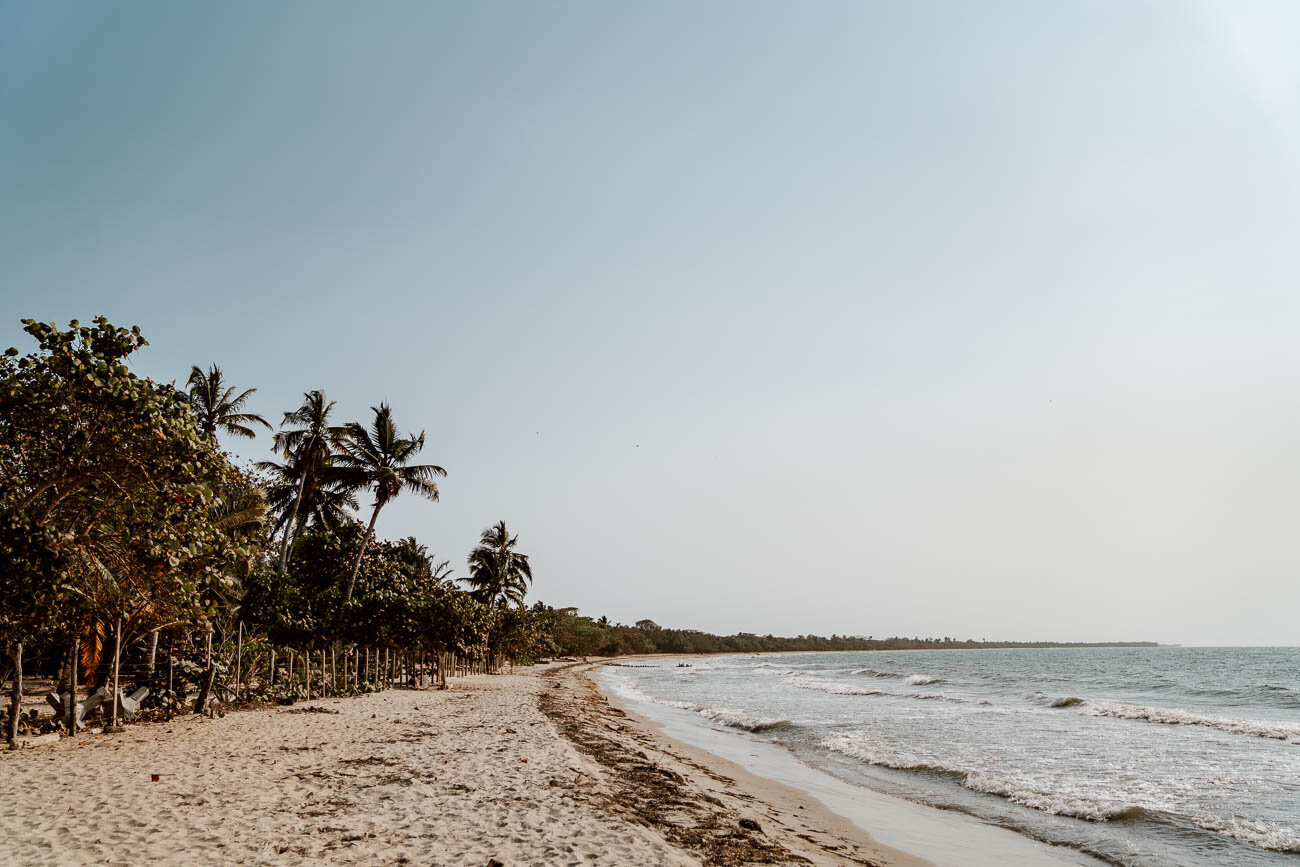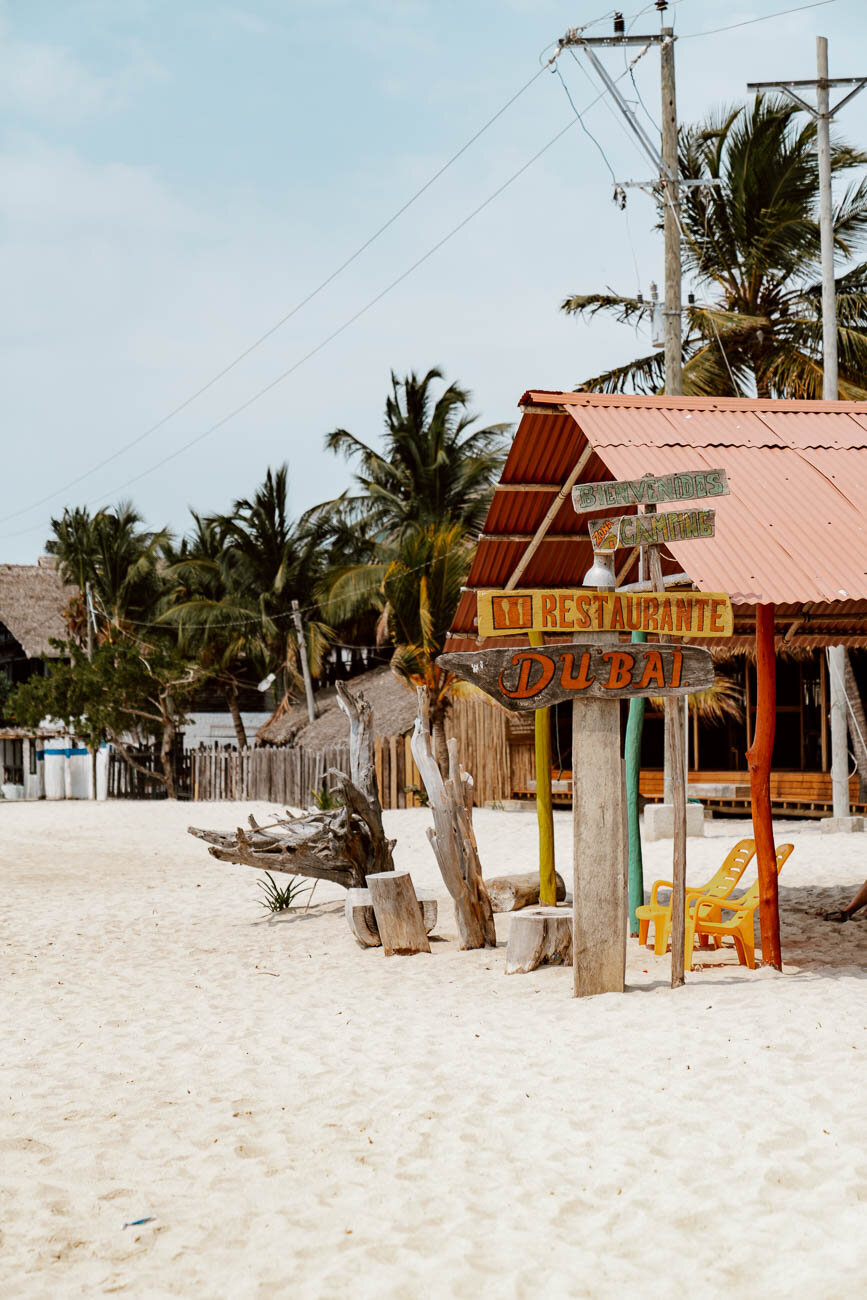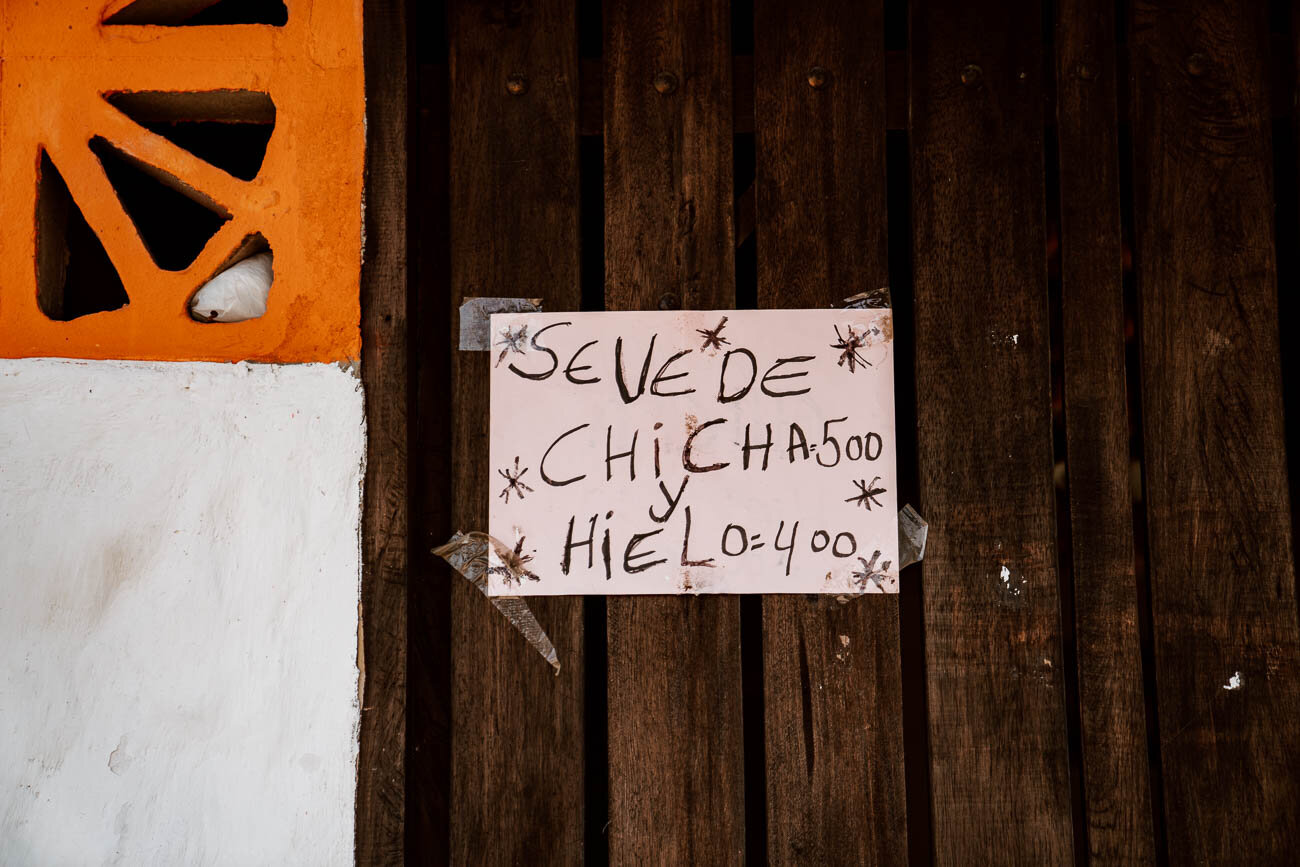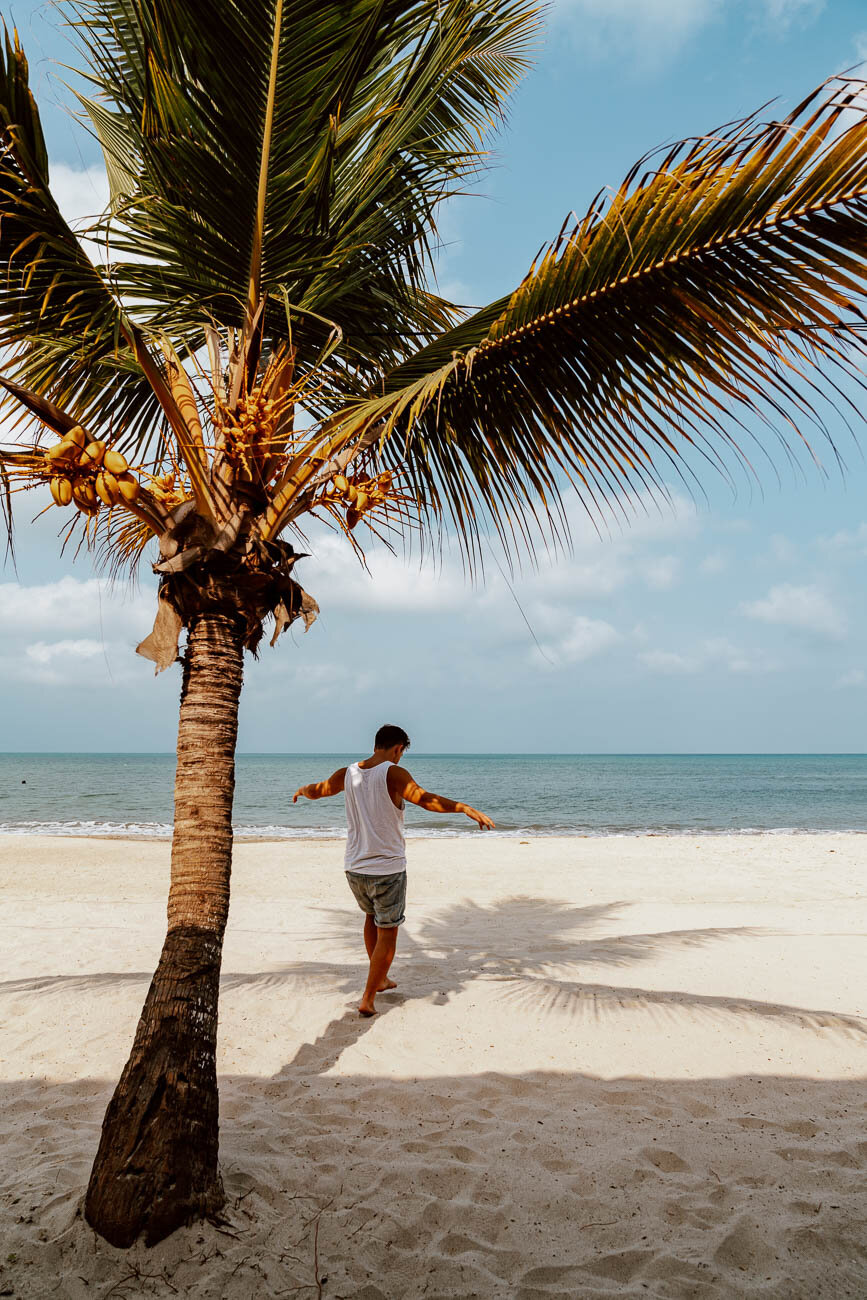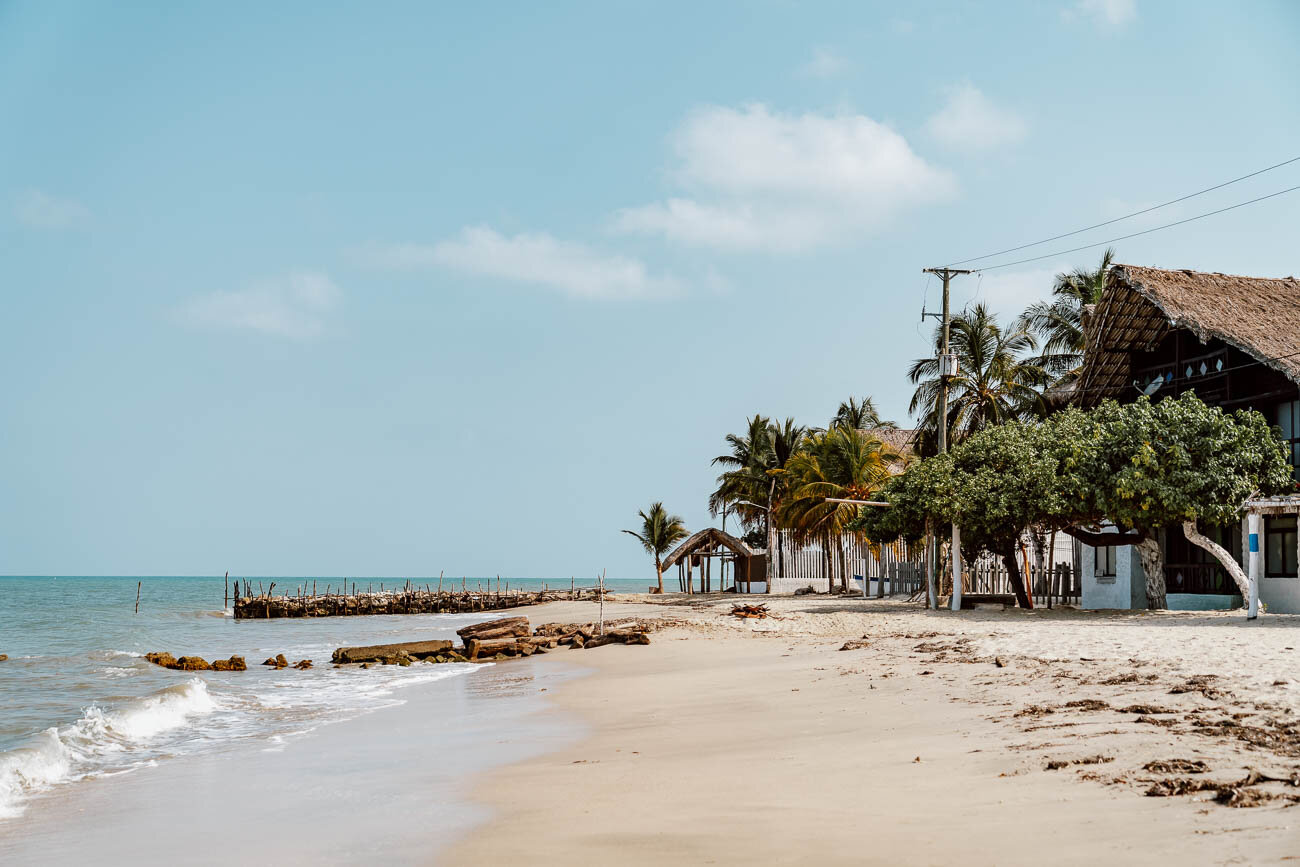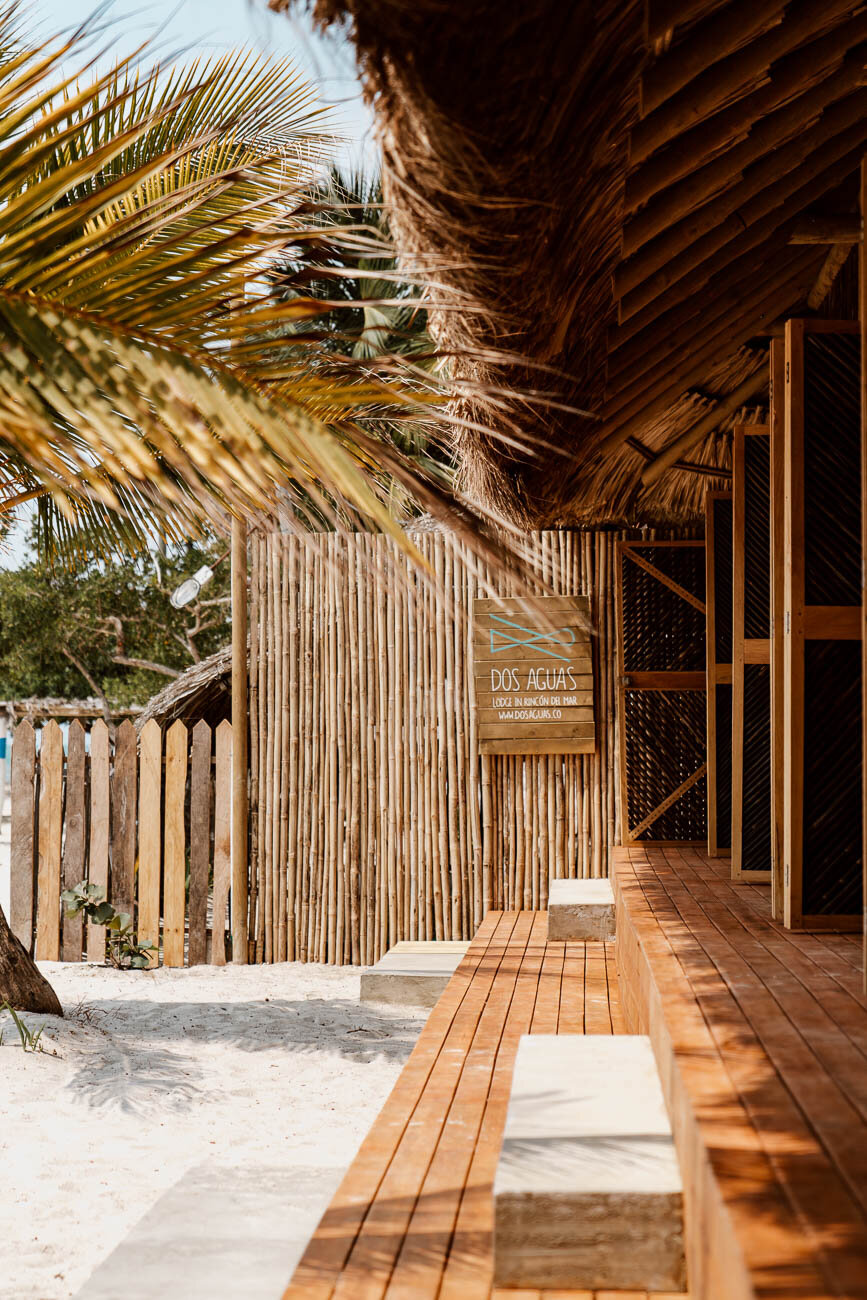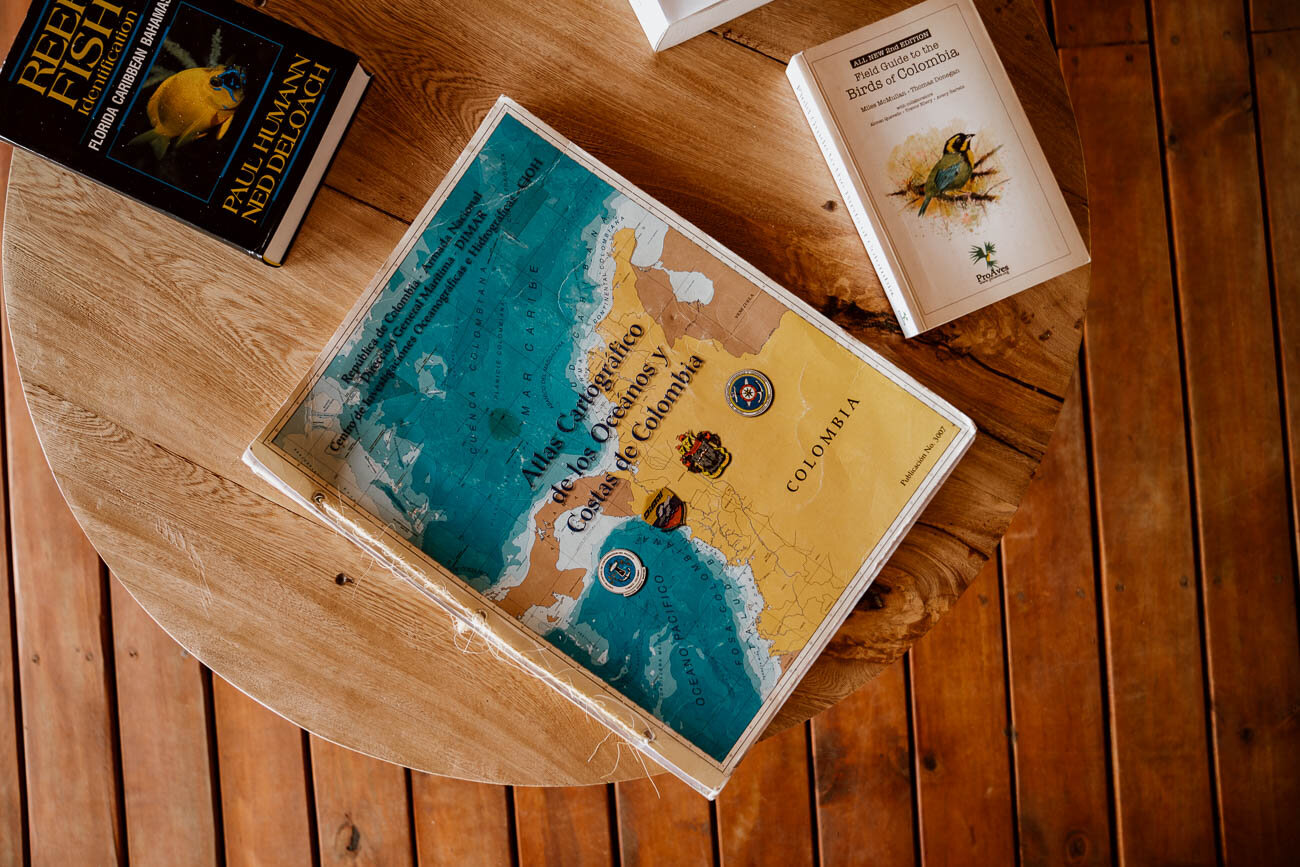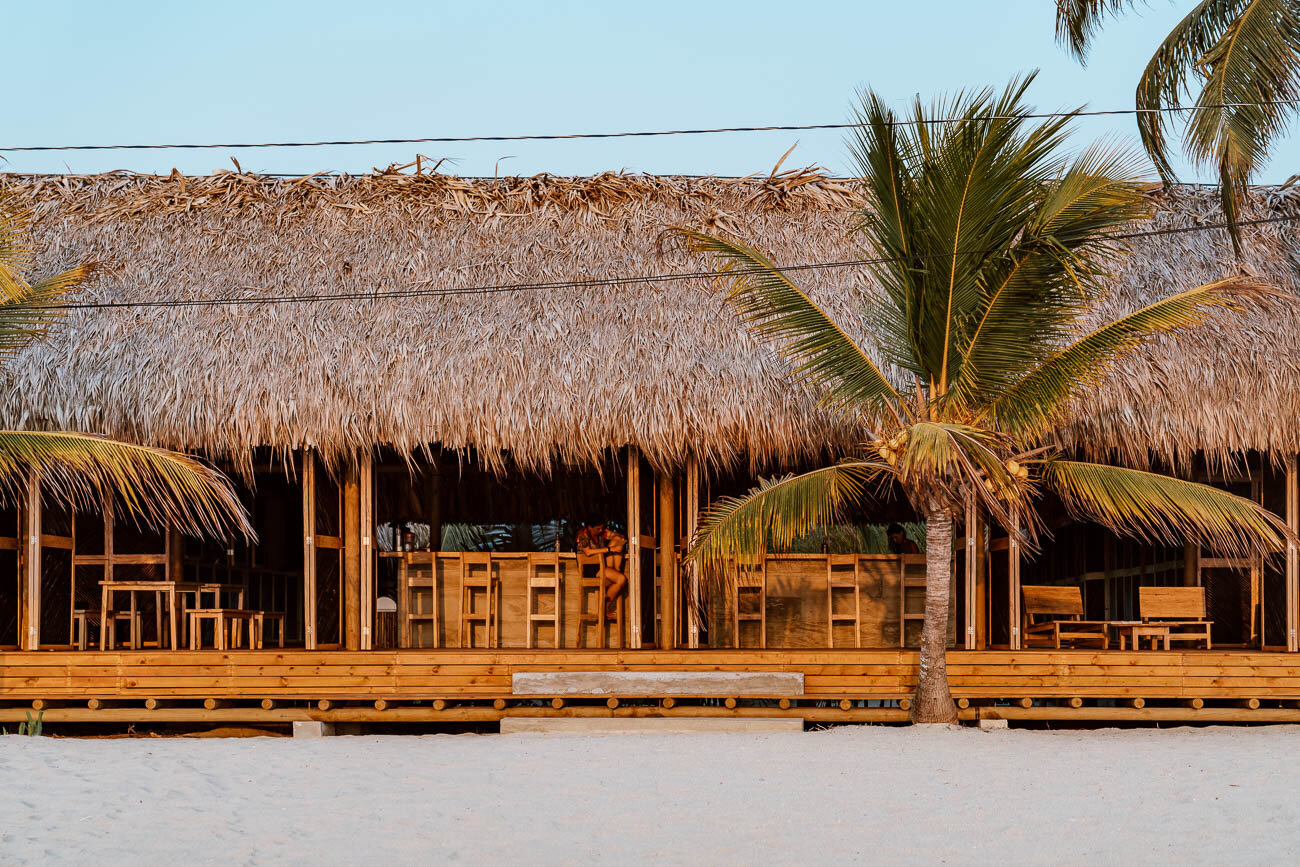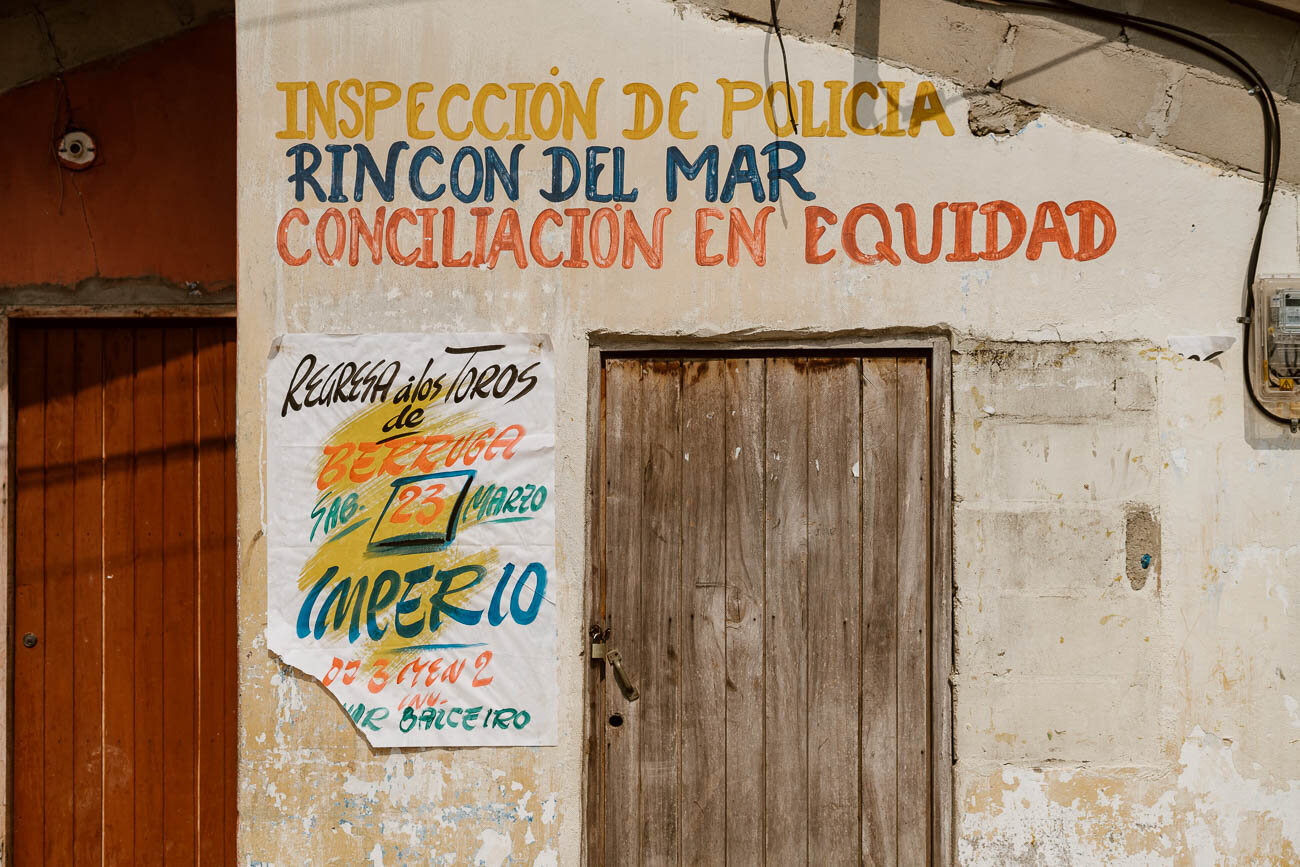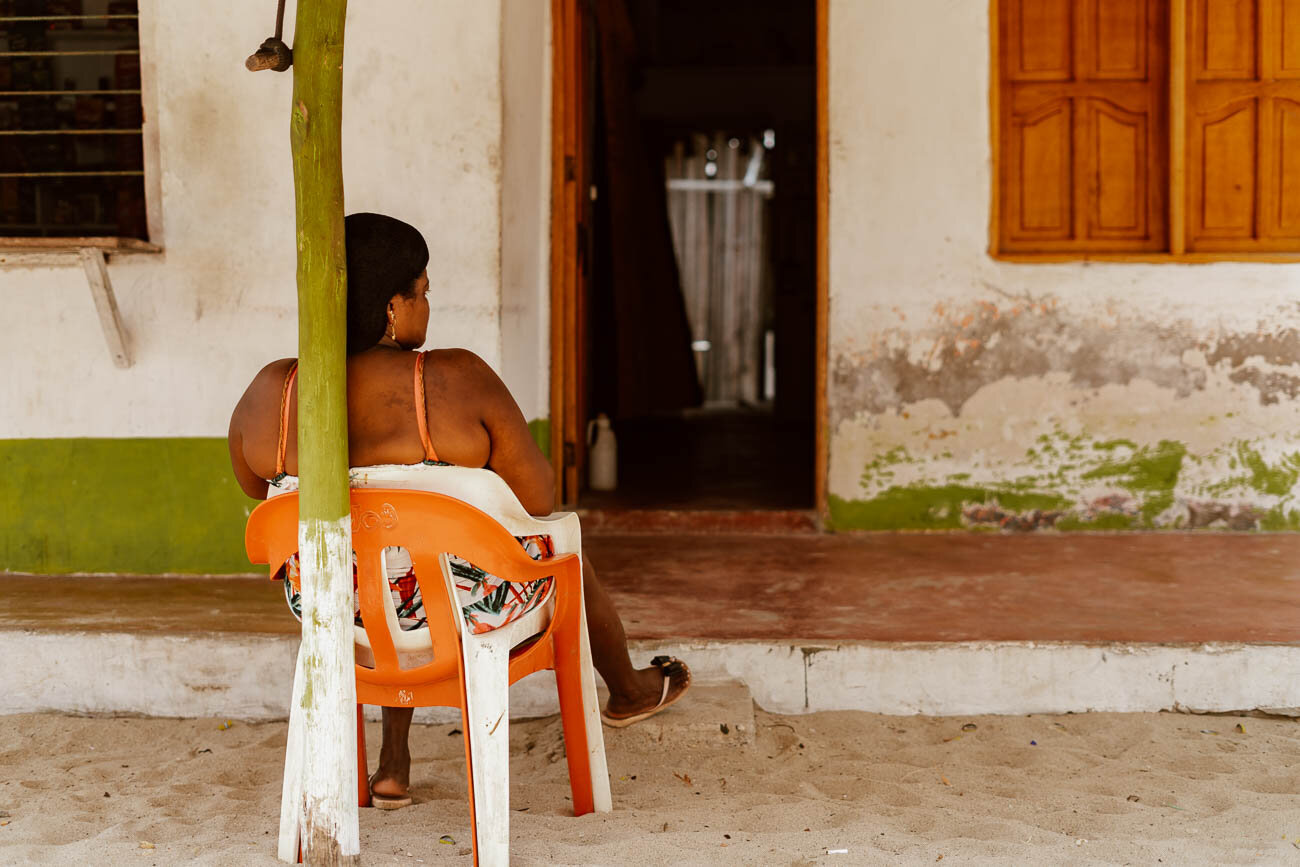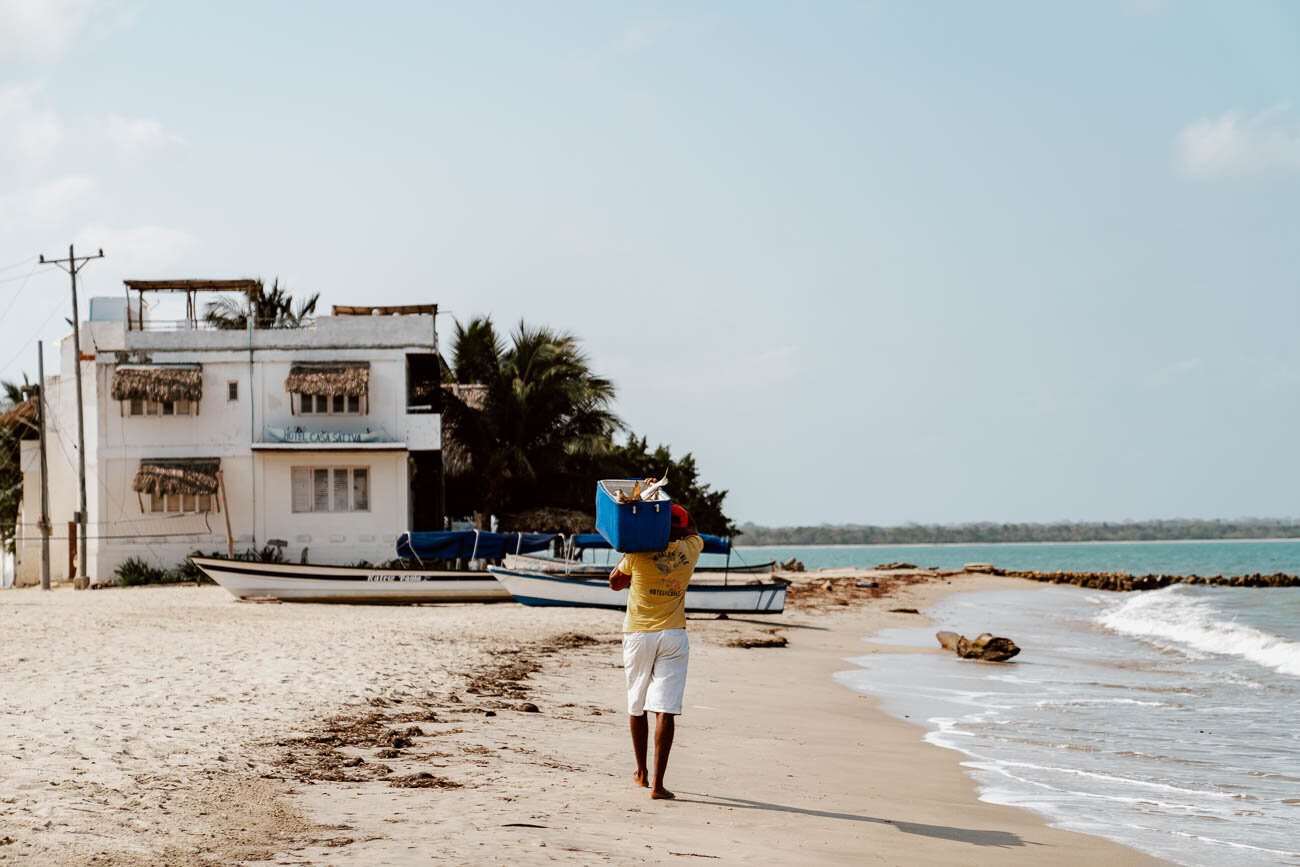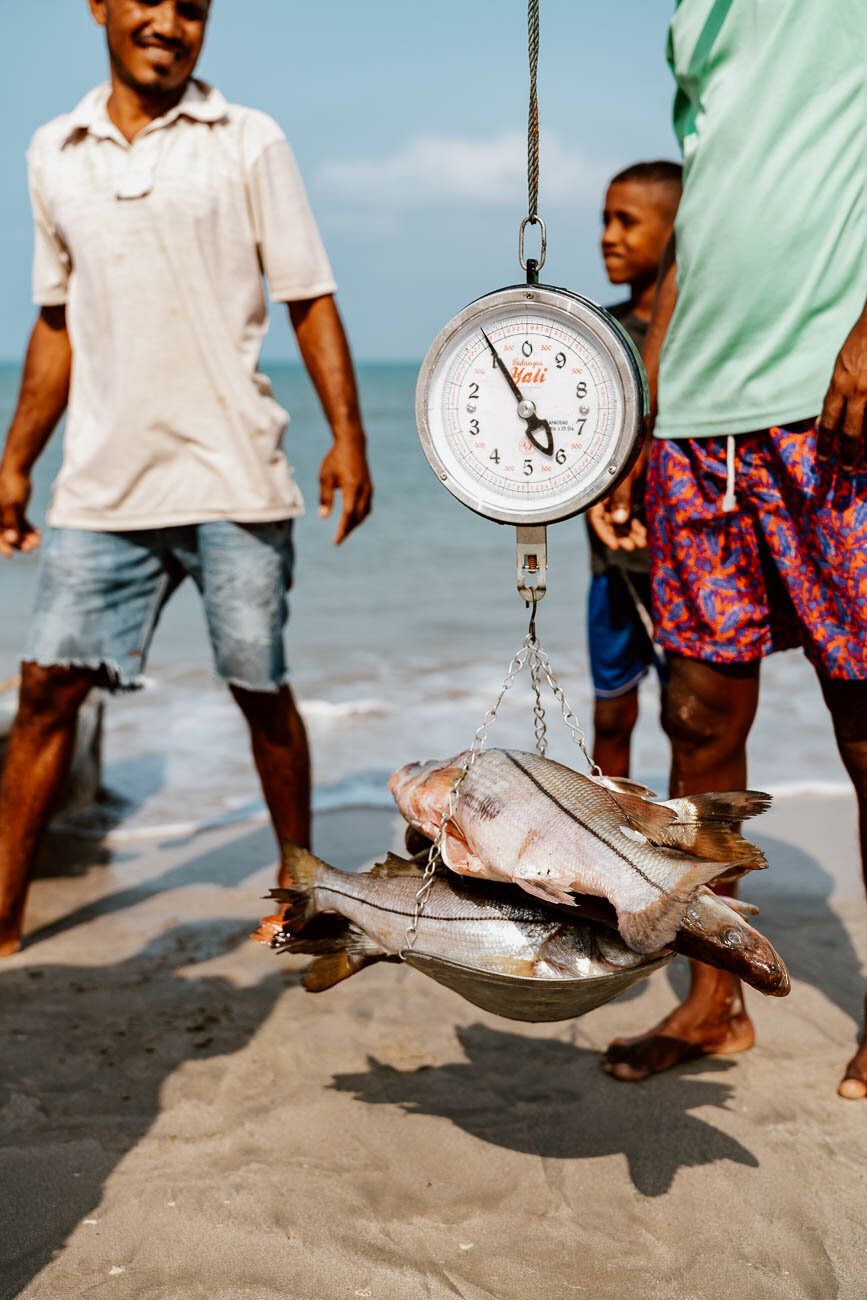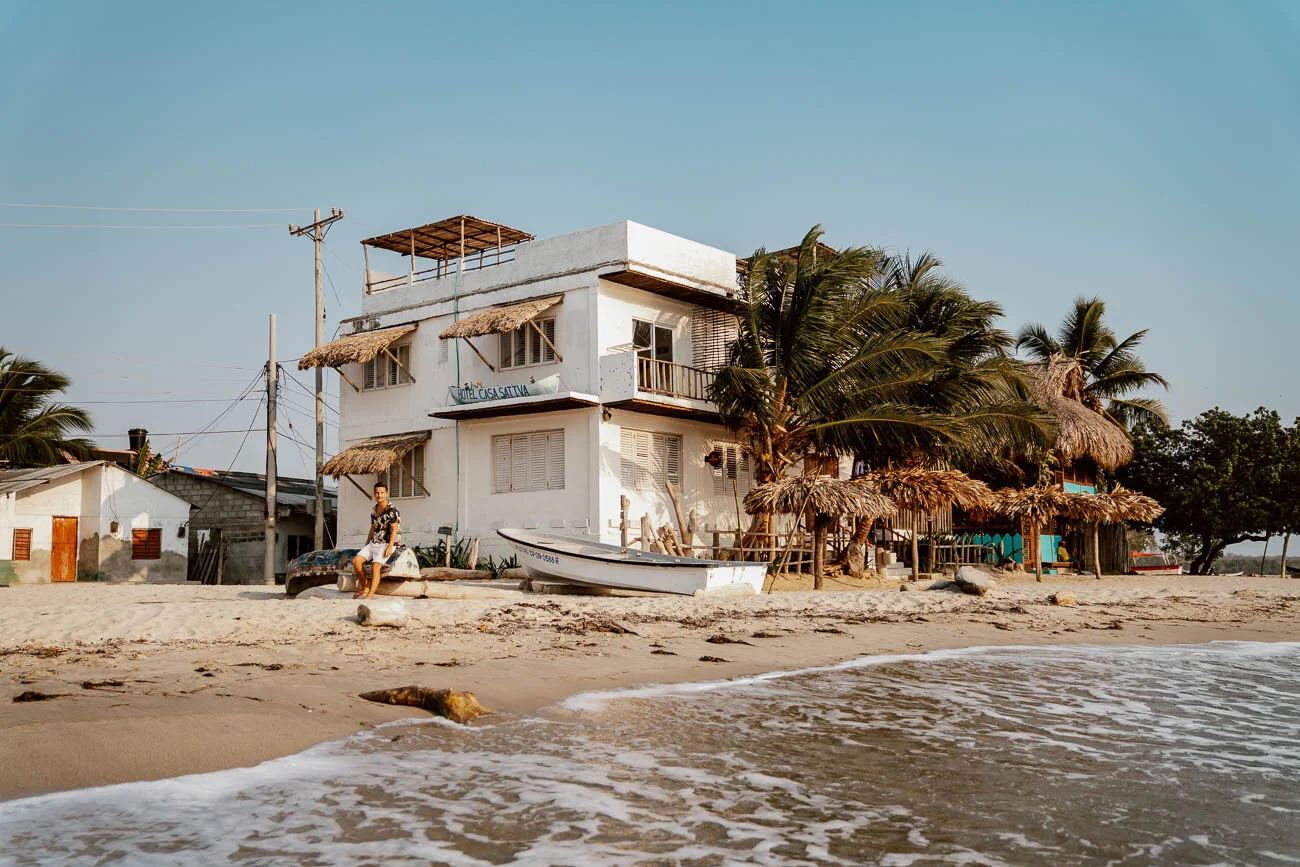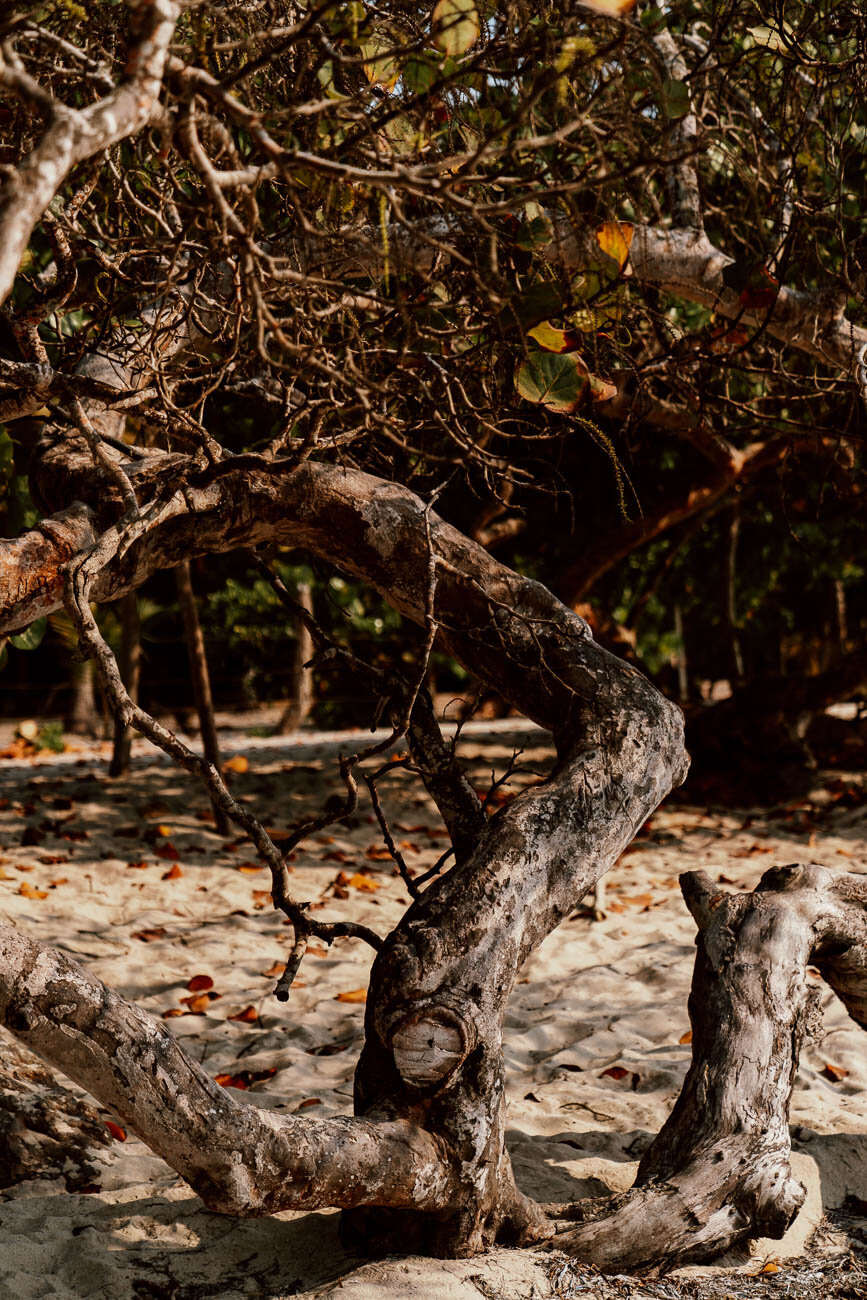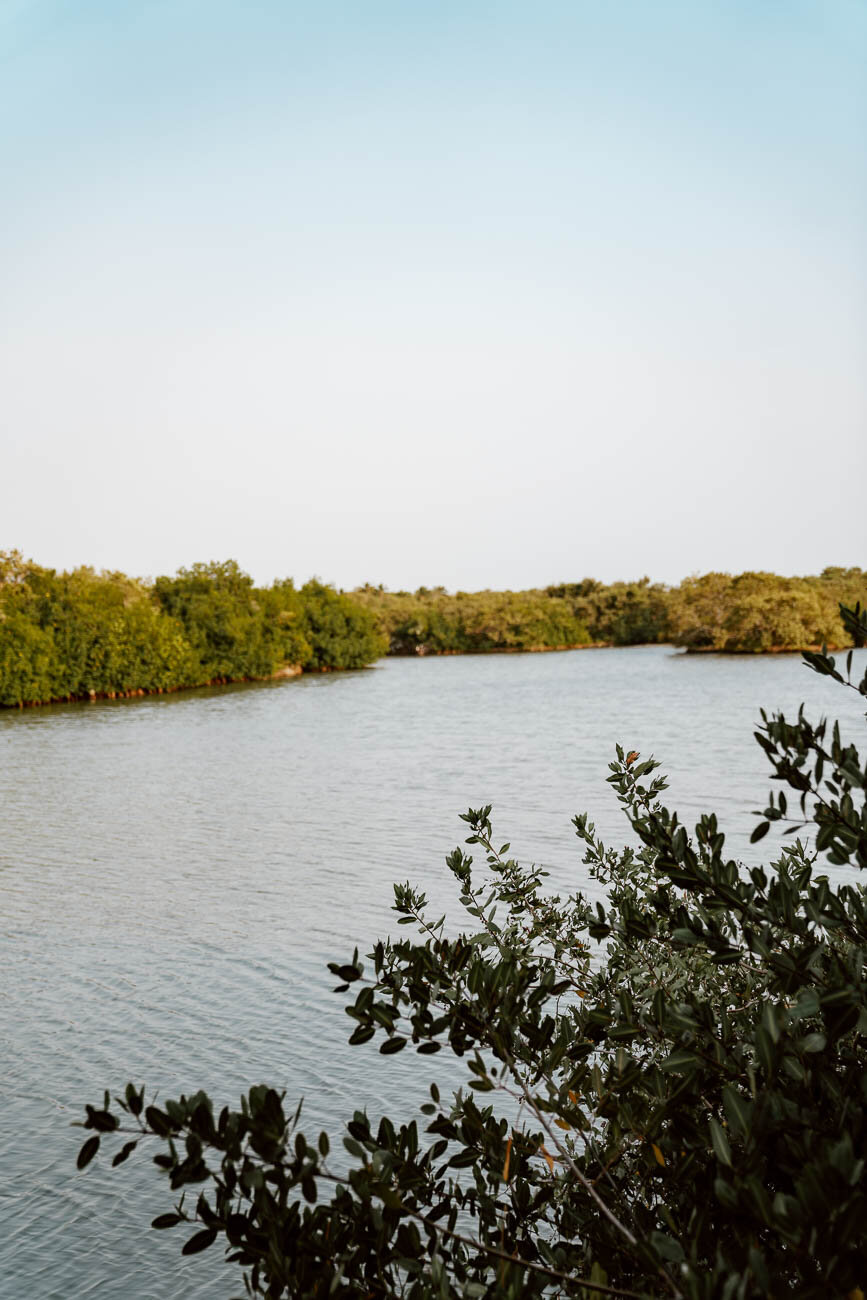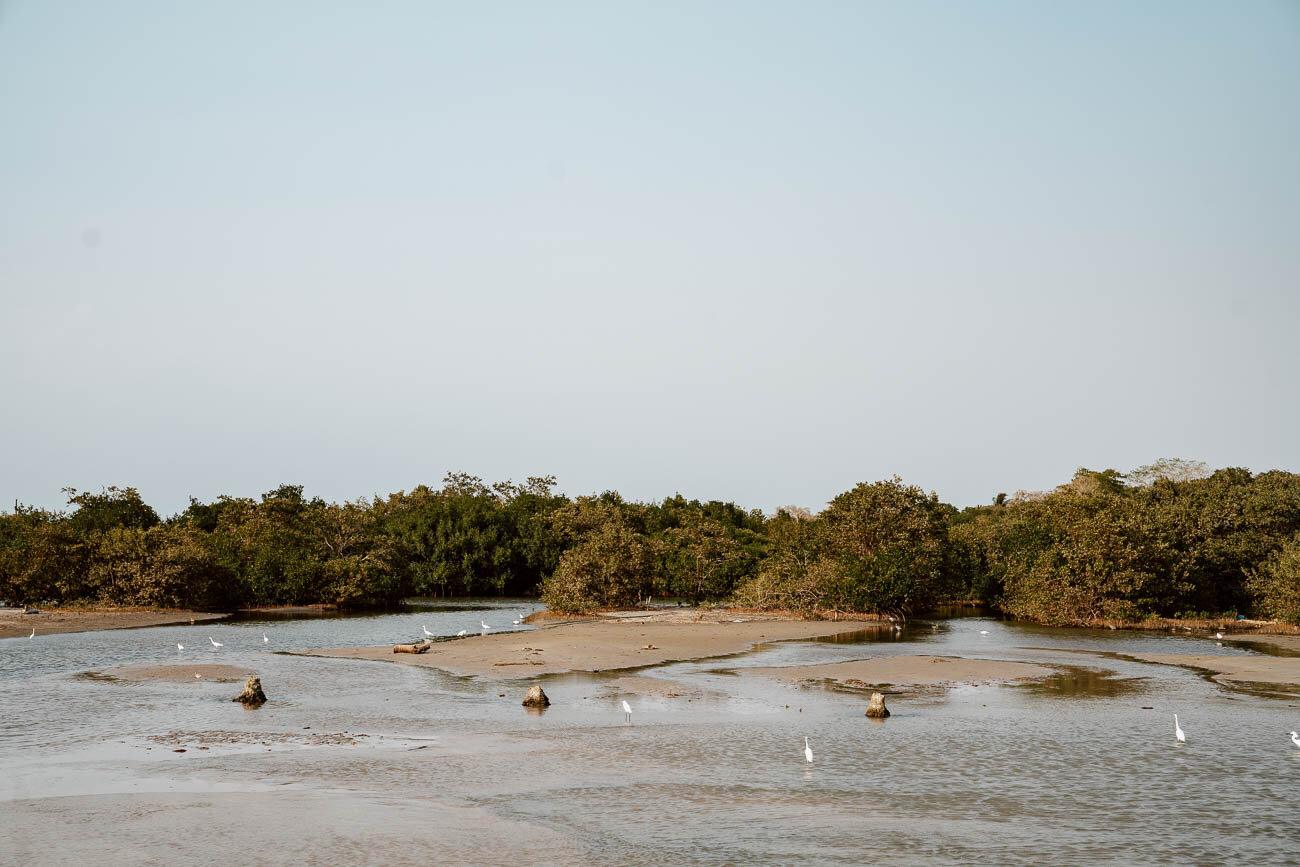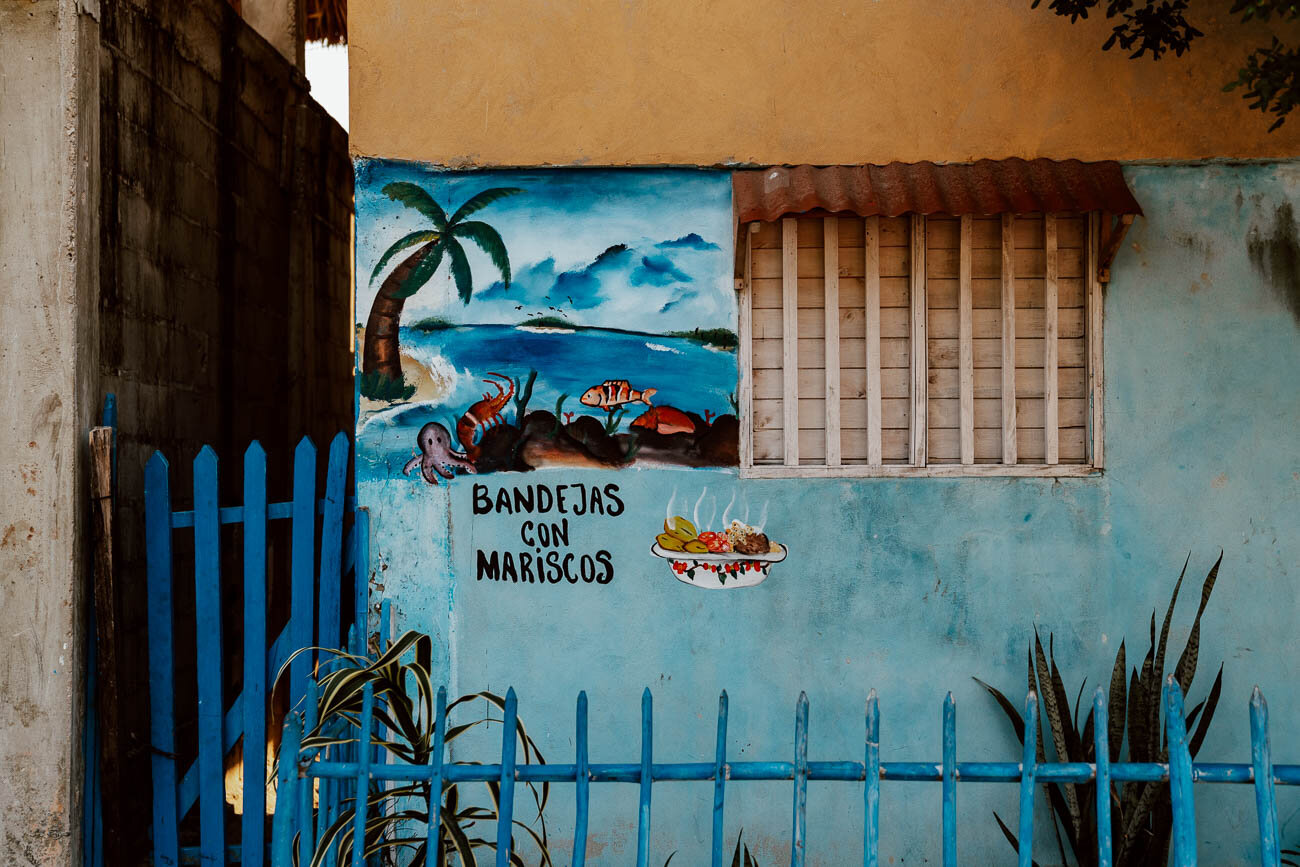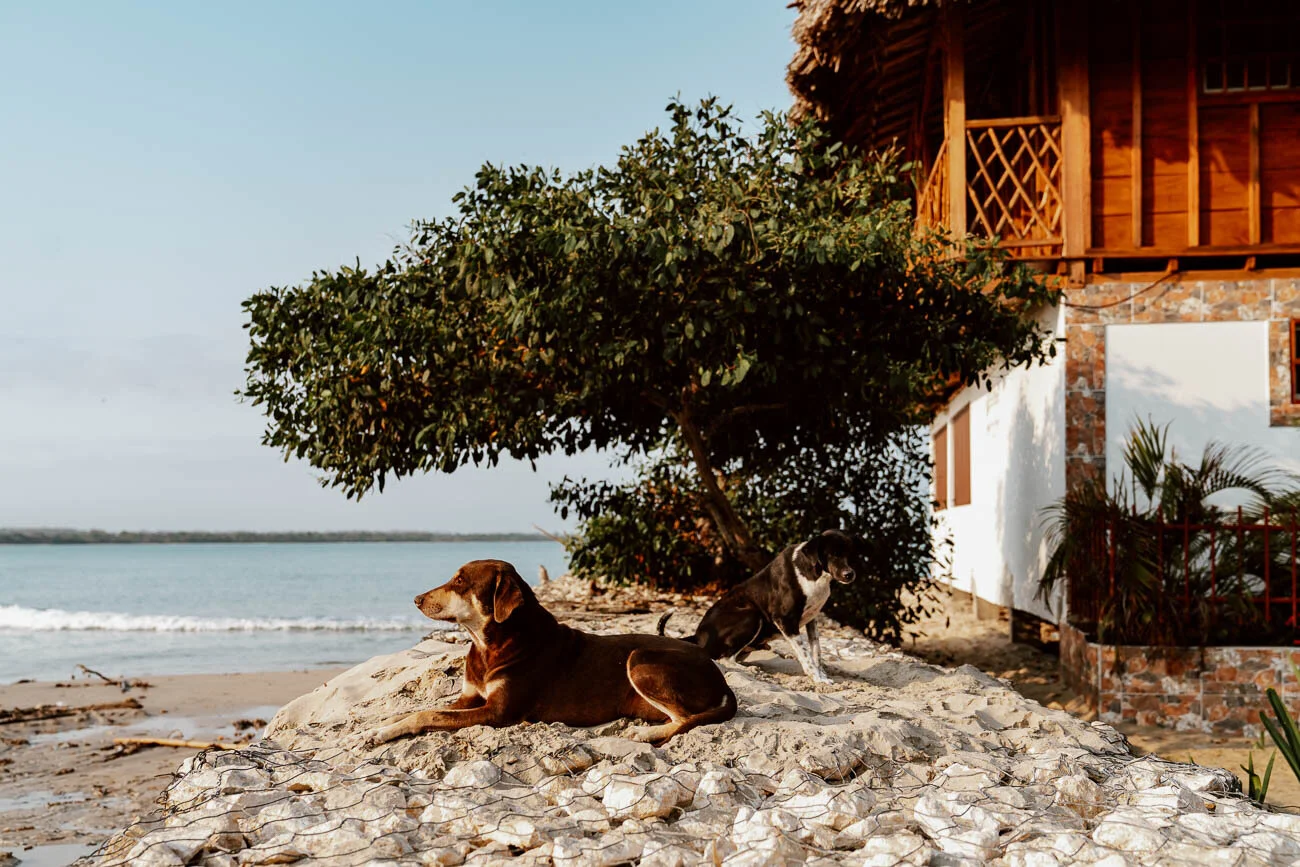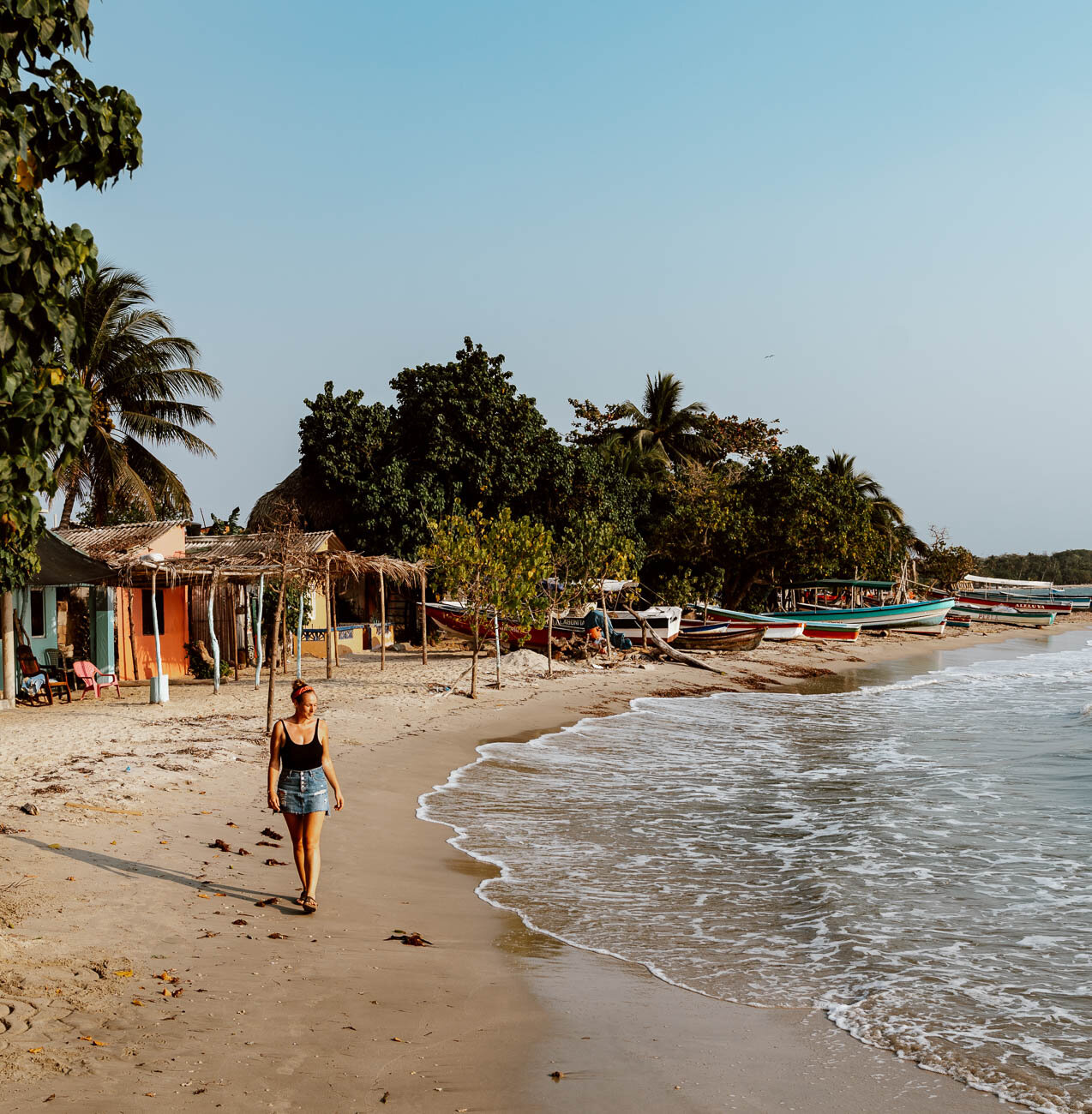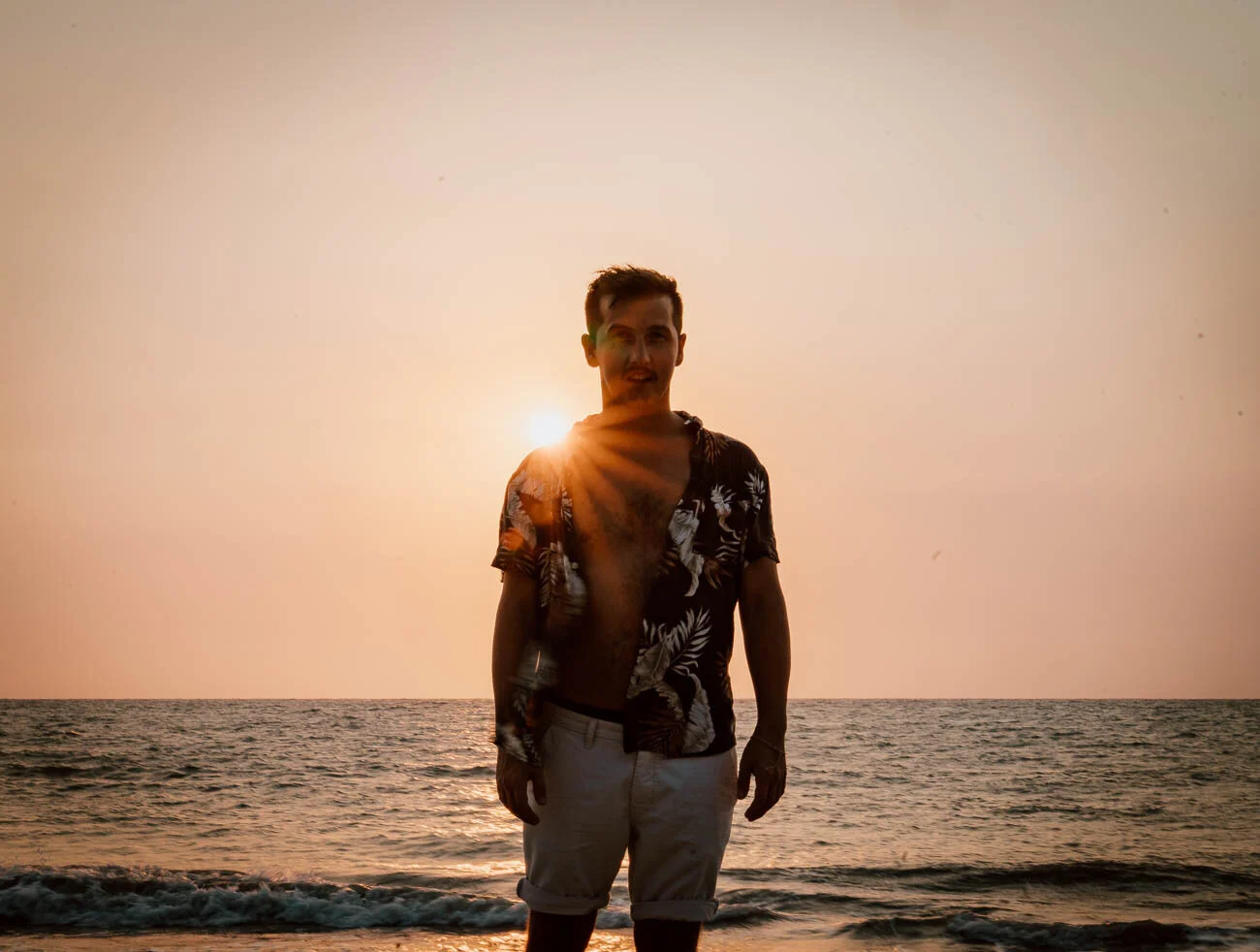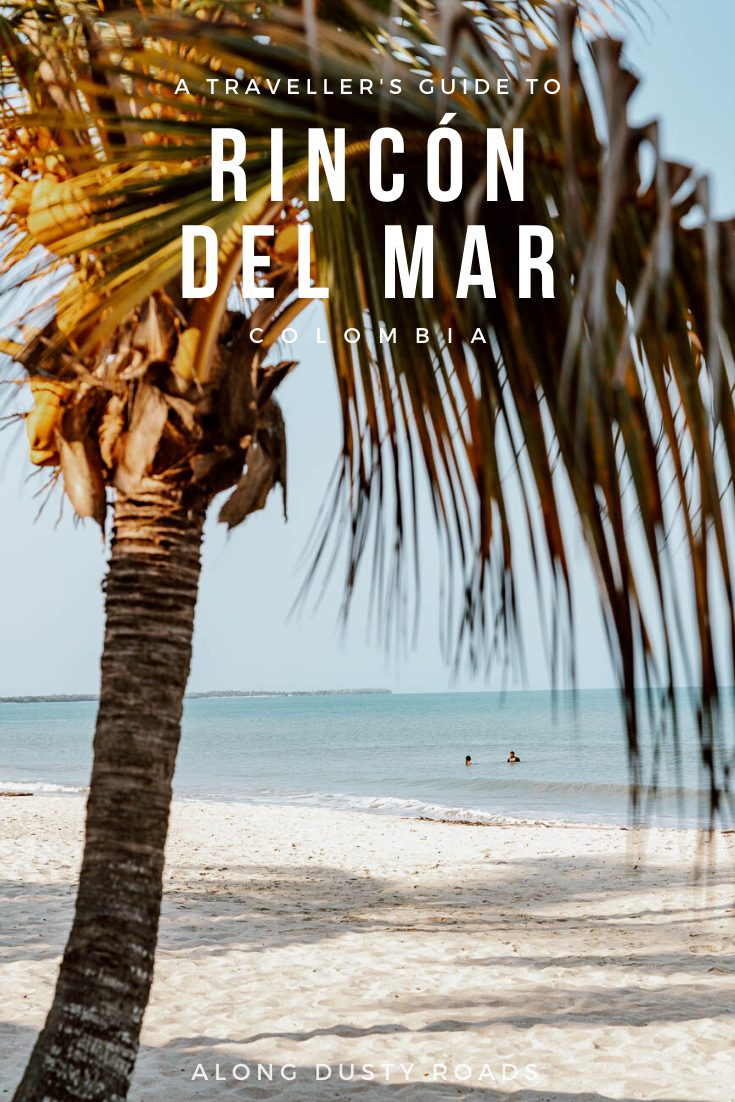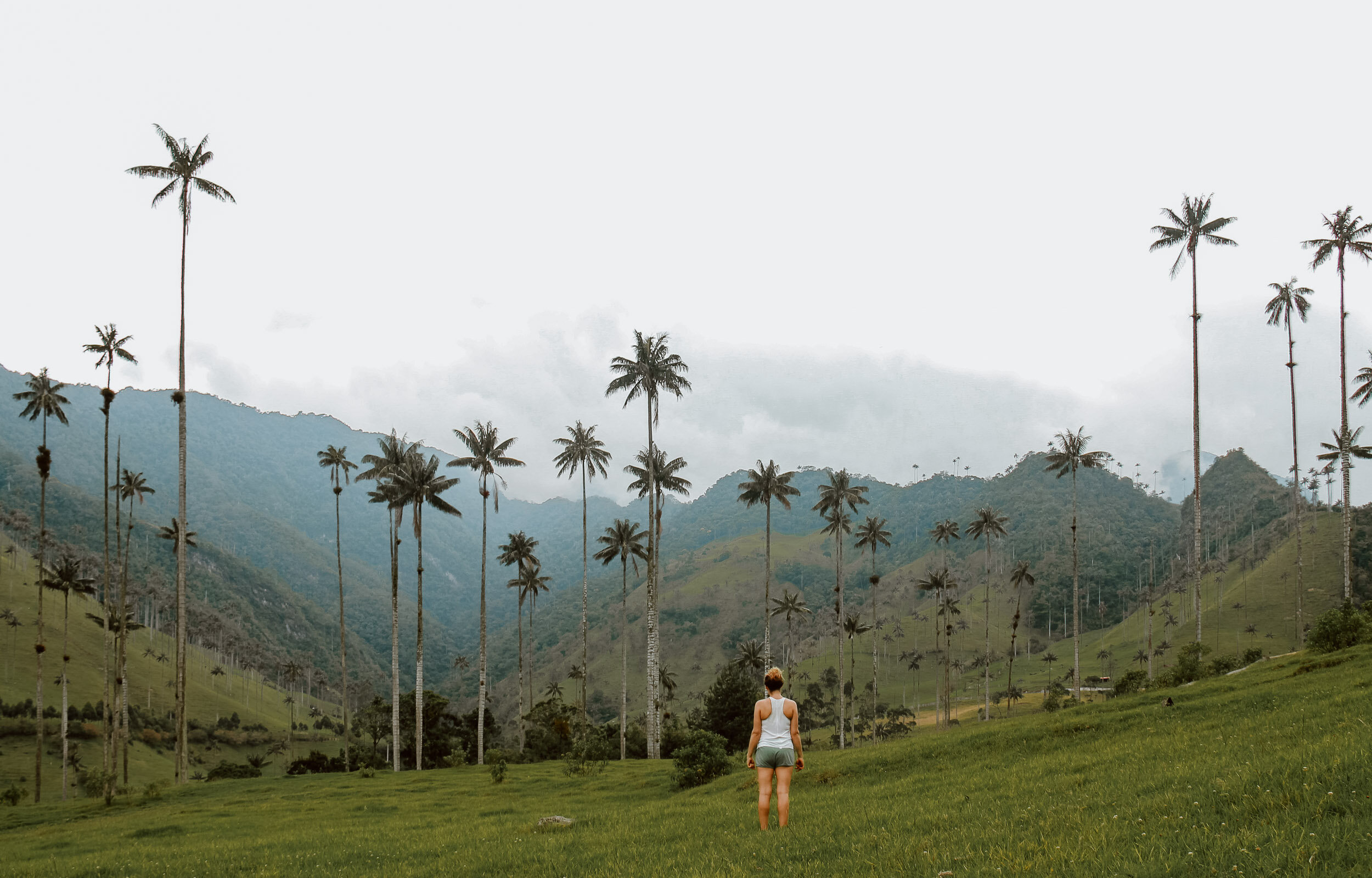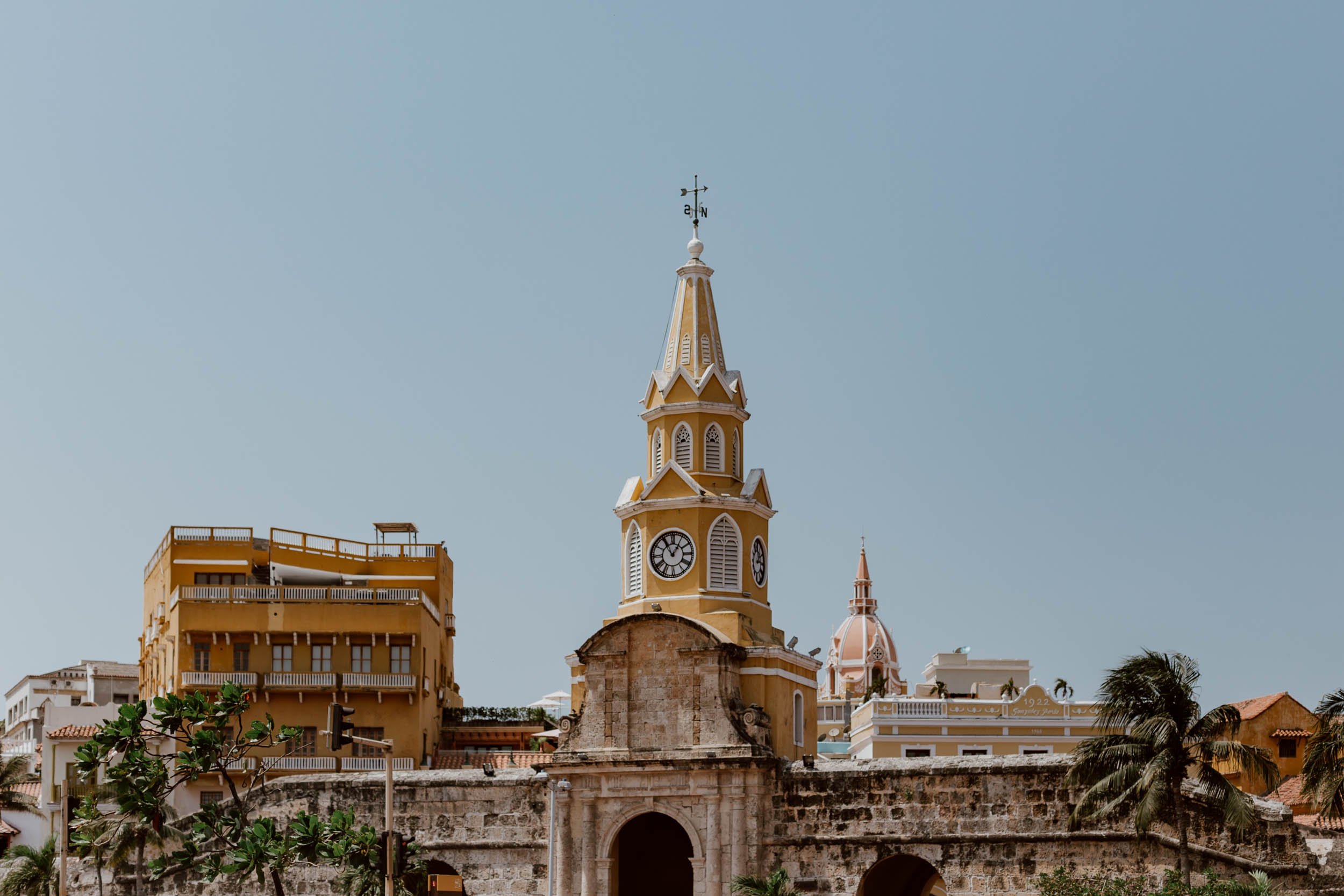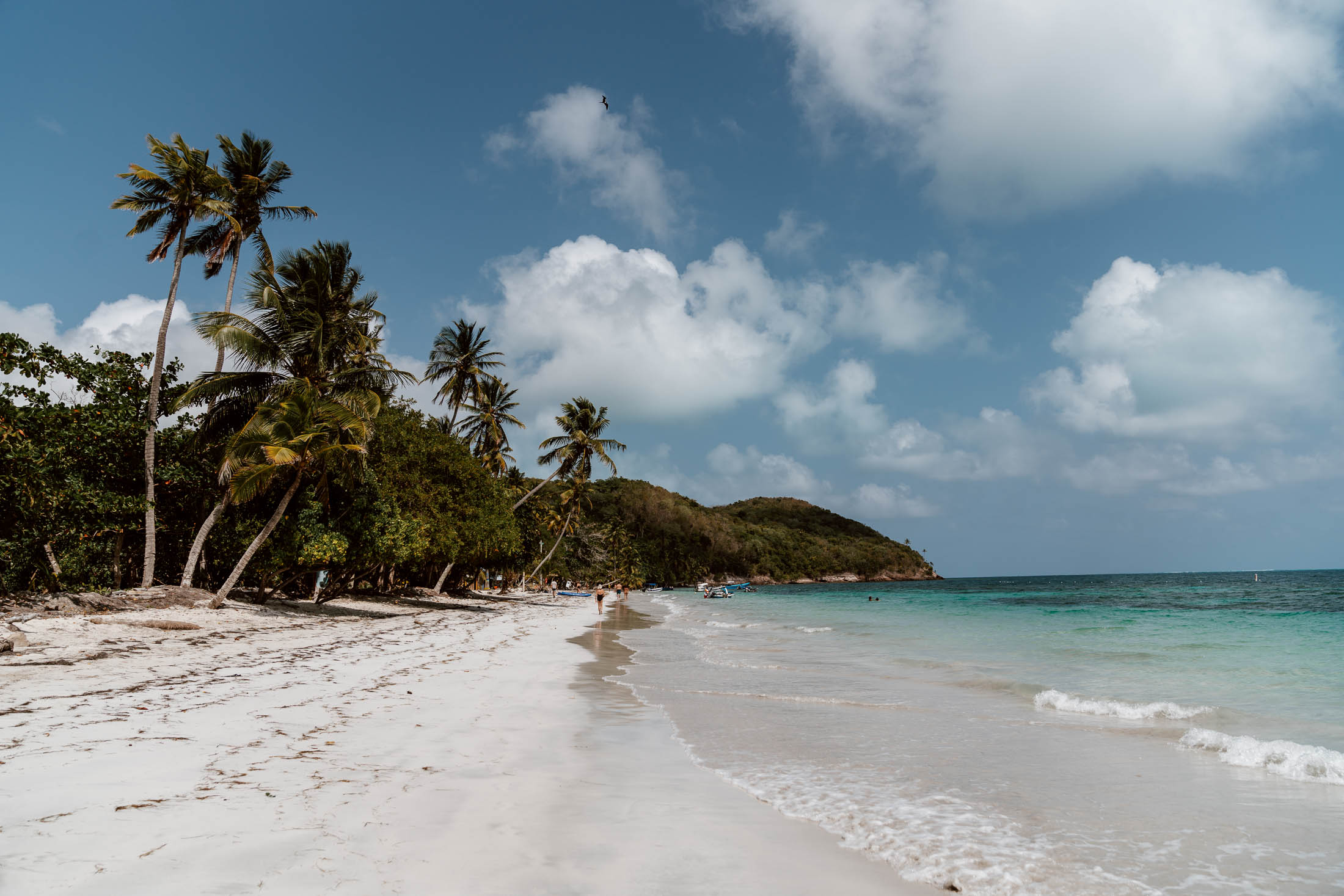Looking for inspiration on the best things to do in Rincón del Mar, plus information on how to actually get there? Then you've come to the right place.
In this little corner by the sea, we felt content.
Calm, happy, whole and at ease with our feet sandy, hair salty and smiles creased and crinkled, rushing for nothing and wanting for no-one. From first to last light each day in this village which feels and acts like an island, time passed slowly and to the the rhythm of hunger, the tide, the breeze, and the stars.
As travellers, Rincón del Mar was almost very nearly perfect for us - without question a wonderful place to end our two months in Colombia.
This small colourful fishing village, where the streets are made of sand and studded with yellow and blue Aguila bottle caps, is only a few hours from Cartagena. But those few hours transport you to a place which feels a world away from the overtourism plaguing the colonial gem of Colombia's Caribbean coast.
Several generations of fishermen and fisherboys patching nets or slumbering after early mornings sailing colourful wooden boats, children riding oversized bicycles barefoot, single storey houses painted in bright, primary shades with doors and windows open to neighbours, and late-night local street parties with a busted speaker shouting out static and reggaeton. Big-bellied women not to be messed with blending tropical juice concoctions with thick glassy chunks of ice and heaped spoonfuls of white sugar. Little boy entrepreneurs selling buckets of fruit they’ve plucked and pried from the beach forests after school, stifling their giggles as the naive visitor samples the unripe sour ones. Sizzles and smoke from spontaneous cook-outs, and purple pink sunsets which linger until swallowed up by the darkness.
Understandably, a growing number of backpackers are learning of Rincón and its beaches. Despite its relative obscurity as Colombia becomes more and more popular to two-weekers, Rincón del Mar is no secret place. But travelling here still means making a decision - a decision to go westward along the coast and down a potholed dusty road toward the sea, rather than venturing east and to the more popular and better known destinations of Tayrona and Palomino.
And honestly, we think most first-time and short-term visitors to Colombia are better off sticking to that eastward trail.
It’s not that we’d like to keep Rincón to ourselves, as that would be selfish and naive. It would be laden with hypocrisy. We are by no means the first to know it and fall for it, and certainly will not be the last. People will come, and more people will come, and this place will change; the lives of this tight-knit local community, will change.
We’re just not sure all the change will be good.
And so, in sharing our experience of this little corner by the sea and why it's just so special, we hope that we can help curious and responsible travellers like you to keep it that way - even if it’s only for a little bit longer. To accentuate the positive, sustainable changes that increased tourism can bring, and minimise its nefarious and uncaring side. To make sure that for the next few years Rincón del Mar remains somewhere which is only revealed to other travellers once they are into your confidences, once you know that they deserve to know it, and to experience it for themselves.
That they’ve earned it.
If you’re someone who has come to Colombia to simply consume a good time, to party to the wee hours, to do drugs, and to be part of that type of traveller pack which can kill a place and its traditions - then please don’t go to Rincón del Mar. We’re usually a little less explicit in this but, having seen how crowded parts of the Colombian coast have become and how hedonistic tendencies with disregard for local communities have already engulfed certain places like Taganga, we feel it’s our place to stop the rot ever setting in at RDM - or at least delay its arrival. This little village was one of few places in Colombia where local people showed real curiosity to ask why we had decided to visit there, and pride to find out why; that's something that can change really quickly if travellers don't take their role and responsibilities seriously.
Here are our favourite things to do in little Rincón del Mar - plus advice on where to stay and how to get there from Cartagena and Medellin.
Things to Do in Rincón del Mar
Lazy Beach Days
As Rincón del Mar is a small, remote fishing village in Colombia with a single main street, its attractions lie in enjoying the slow pace pleasures of life which only a small, remote fishing village in Colombia with a single main street can give.
Swinging in a hammock, swimming in the bath-warm sea, sunbathing on the soft white sand, and sipping on cold beers or fresh fruit juices in the afternoon.
There are three main bits of beach in and around the village. Our favourite was La Punta, the secluded stretch a short walk out of the village and over the bridge. It was fortunately where our accommodation was based, and it felt a like a private beach at times.
The main bit of beach which runs parallel to Carrera 3 - the main street - is home to fishing boats, the restaurants, the hostels, and, depending on the time of day or if the village is having a party with a rented fridge and blown out speaker, a fair few of Rincón's inhabitants.
The third, Playa Balsillas, is a short walk outside the village in the opposite direction (Google Maps) and long, windswept, and rugged. It has the potential to be really excellent, but unfortunately it was covered in lots of litter (some washed in, some not).
Stay at Dos Aguas Lodge
We were fortunate enough to stay at Dos Aguas Lodge in the first week of its opening, and this place was a huge factor in why we loved our time in Rincón so much.
We are certain that we would have loved this village anyway, but staying here definitely made the experience so much better (especially as we were completely over cramped hot hostel rooms with no windows and sheets the don’t fit by the final week of this 4.5 month trip!).
Run by a Colombitalian couple (that's Colombian and Italian) with the fateful names of Dania and Daniele, its gorgeous Bali-style private rooms and spacious dorms - built by local artisans and craftsmen - lie hidden away on the idyllically peaceful section of beach just five minutes from centre of the village (i.e. where all the other hostels are). With the sand and sea on one side and the mangrove swamp on the other, it's a truly wonderful spot.
We would read books, watch the water and boats from the wooden steps, sip stiff cocktails at the bar, do morning yoga classes on the deck, and feel very happy each day we awoke to the sounds of the waves.
The design, location, atmosphere, tropical breakfast, and price of the accommodation are reasons enough to stay at Dos Aguas, however, what really sets it apart from other hostels here and all over Colombia, is that a clear sense of responsibility and commitment toward sustainability have underpinned it from the very beginning.
Dania and Daniele have involved the local community every step of the way in slowly creating their hostel, and been considerate of their role in it going forward. During our time there, it was clear to see that this was something they take very seriously. With these two in place, we're much more confident that Rincón del Mar and its community is in a better place to deal with the challenges stemming from the inevitable increase in tourism over the next few years.
They're also best placed to share with you the delights and intrigues and struggles of daily life in Rincón for locals and themselves, with stories full of love, humour, and a sometimes heartache.
Take a look at their dorms and private rooms, or making a booking, on Booking.com or HostelWorld.
*For full transparency, Dania and Daniele reached out to us on Instagram about visiting them in Rincón del Mar as they followed our blog and knew we were back in Colombia. We did not accept any sponsored accommodation on this 4.5 month South America trip, but made an exception for these two since their philosophy and approach to responsible tourism and community involvement was so sincere and refreshing. It wasn't just words or marketing, but something they had put it into action - and so we wanted to help spread the word.
However, after our stay, we felt that Dos Aguas deserved more than a small mention, and we know that you will love it there.
Really.
Visit the San Bernardo Islands
As were were both so utterly content with the beach, the vibe, and the daily rhythm in Rincón, we shelved our plans to have two days on these islands.
However, as it's a popular thing to do from Rincón (they're only 30 or so minutes away), we thought we should let you know about it!
This little archipelago of the ten San Bernardo Islands is actually part of a national park, but doesn’t currently feature on many Colombian traveller itineraries. Expect secluded beaches, excellent snorkelling, palm trees, and a chilled out Caribbean experience on islands such as Múcura, Tintipan, and Palma.
Santa Cruz del Islote however, the most densely populated island on earth, is obviously a bit different. Check out these two excellent articles on it by The Guardian and the BBC.
You can easily arrange a day trip boat tour or transport to the San Bernardo Islands in RDM - unfortunately we don't know the prices or have any recommendations on who to use, so let us know in the comments if you do it! Alternatively, you can visit these islands from Cartagena.
Seafood Almuerzos
Unsurprisingly in a village by the sea, fishing forms a large part of the local economy.
From what we witnessed, it's still very much a local, sustainable and small-scale industry: early each morning colourful wooden boats sailed across the silky silvery blue, men huddled and haggled around the catch with weighing scales on the beach, and menus and prices adapted according to what was plucked from the sea earlier that day.
Most lunchtimes, we would either head to the little family shack next door to Dos Aguas for a menu of soup and plate of fresh fish, or amble the short distance over the bridge towards the main beach. There, you'll find a half-dozen or so laid-back restaurants with plastic tables and chairs dug into the sand, and they all offer up tasty traditional Colombian seafood dishes (prices can vary wildly for the same dish between restaurants, so maybe check out a couple before choosing). These lunches in the sunshine were perfect, and we'd stretch them out with a few cold beers or a cocktail.
At dusk, we would repeat the process, either picking the same spot for lunch or trying somewhere new; this time however we would be eating under the stars with the lapping surf providing the background music.
Meals ranged from 15,000 COP each to 25,000 COP if we opted for something like a big ol' plate of garlic shrimp and patacones.
I am literally drooling at the memory of those shrimp.
NB | Vegetarian food is easily found in Rincon, with every restaurant being able to provide you rice, beans and plantains, or occasionally something more exciting.
Scuba Diving
There are a couple of small dive shops in Rincón del Mar where you can learn how to dive or head out on the clear, warm water for a diving excursion.
One dive centre is Rincón Dive Centre, located near Chill Octopus Hostel and opposite El Kike, the main village shop - visit the centre’s Facebook page for more information on courses and costs. There is another dive school called Rincon Del Mar Dive Centre.
It's also possible to do some great snorkelling in RDM, either on your own or with a boat trip with a local fisherman.
Nighttime Phosphorus Plankton Diving + Bird Island
Quite possibly one of the most popular things to do in Rincon del Mar is a sunset adventure to ‘bird island’ (also known as Cabruna) combined with nighttime phosphorus plankton swimming. After a couple of days of doing exactly nothing, we peeled ourselves away from the sandy shores, and hopped on a boat tour to check it out.
It was a little crazier than we expected.
Beginning at the bird island, around 15 minutes away, we waited until the skies began to turn pink and were rewarded with flocks of birds returning home for the evening. Just us, another German traveller and our boat driver standing in the shallows of the Caribbean Sea as thousands of birds circled and swooped overhead. Pretty cool.
As darkness descended, we left the open waters and made our way by boat into the labyrinth of the mangroves in search of plankton. Donning our masks, we jumped out of the boat and into the water. From nothing but blackness, our movements created glittery solar streams of bioluminescent plankton. It was only the second time we’d been able to swim with them in South America (the previous time had been during a spontaneous night time dip in Ecuador), and once we’d got over the fear that there was almost certainly a wild animal of some description sharing the water with us, it felt pretty bloody special.
And then things got a little interesting.
As anybody who has watched a late night movie on one of lesser TV channels can attest to, mangrove swamps are essentially the setting for some dark and twisted horror movie, and going between their roots and tendrils with only our captain's spotlight guiding the way was beyond creepy.
And then the boat got stuck.
And we had to clamber out into the the water and push it beyond a sand bank and jump back in
And then, for the next 30 minutes, in near pitch black, the boat battled against the sea. In the darkness, you couldn't see a wave cresting but the heavy, spine shaking ‘thwack’ as we landed on the other side was confirmation that as our tiny wooden boat was moving in one direction, the waves all wanted to move in the opposite.
It was a really great experience - really great - but we were both very very happy and ever so slightly relieved to make it back to shore! So, if you do it, just make sure it's not a rough sea day and that you've got decent sea legs.
Dos Aguas arranged the tour for us with a local fisherman, and his price was 50,000 COP per person with a 5.30 p.m. departure. We expect that all hostels in RDM will easily be able to arrange a similar tour if you do stay elsewhere. It's best to take a a tour when the moon is new, as that keeps the light levels at their lowest for the plankton. In order to reduce impact on the fragile lagoon, it’s important that the boat drivers turn of their engine at the entrance to the canal and paddle the boat manually through the canal and into the lagoon. If not, the fuel from the engines enters the lagoon. Some boat drivers don’t do this (ours did), so please kindly ask them to switch off the engine.
Tip | A different, slightly more sedate trip, is to take a canoe out amongst the mangroves to understand the crucial role play in the ecosystem of the area and spot birds.
Travel Tips for Rincón del Mar
Money | There is no ATM in town and cash is king, so make sure you bring plenty with you. And, since we're pretty certain a bunch of you will end up extending your stay by a night or two, it's a good idea to bring more pesos than you think you'll need.
Accommodation | If you don't want to stay at Dos Aguas (though you really really should), then your best bet is one of the cluster of backpacker hostels on the main street. These are all quite close to each other and beach-facing. We felt Mamallena looked very tired, so take a look at other options like Rincon del Frances, Hostel Blue Sea, and Chill Octopus.
You can view and book more accommodation options on this specific Rincón del Mar landing page on Hostelworld and Booking.com.
Note that, as with anywhere by a beach in Colombia, business picks up a lot in the December, January and Easter holidays and most of accommodation is either full or charing significantly higher prices. And neon bikinis are everywhere.
Rubbish | There are few facilities to handle or process everything that's consumed in Rincón del Mar, so do your bit to not contribute unnecessarily. You'll quickly see on some sections of beach that rubbish is a real issue here, so help keep things clean by picking up litter where you see it. If you're planning your trip to South America at the moment, then we implore you to invest in a travel filter water bottle which will almost eliminate your need for single-use plastic bottles and provide you with safe drinking water everywhere. RDM also suffers from water scarcity, so be prudent in your usage.
Read this post to learn how to travel with less plastic.
Cooking | If you would like to cook in your hostel, the range of grocery options in Rincón is really limited (particularly for fresh veg), but you'll find El Kike and some smaller tiendas on the dusty main street.
Doggies | There are a few beach and street dogs in Rincón del Mar who will try and make friends with you - we fell hard for all of them, but especially for a little guy we christened Patacone. Be nice to them :)
How To Get to Rincón del Mar from Cartagena + Medellin
It isn't too complicated to reach Rincón del Mar from Cartagena or Medellin, but it's definitely takes a little more planning than other beach towns on the Caribbean coast. However, this relative inaccessibility is one thing that will help to keep Rincón del Mar such a great place for travellers for a few more years at least.
Bus to San Onofre
All roads lead firstly to San Onofre; a town that you won’t linger too long in but which serves as the access point for the dusty bumpy road to Rincón del Mar. Please note that we highly recommend arriving in San Onofre during the day as it makes things a lot easier for you, and is cheaper overall.
Cartagena to San Onofre | Firstly, make your way out of Cartagena's old town to the bus terminal (Terminal de Transportes - Google Maps), which is 45-minute taxi ride away depending on traffic. Try to share with other travellers to keep the cost down, or take the bus there if you have lots of time and are on a strict budget.
There's always a hustle going on in Cartagena Terminal, with men happily telling you their bus is next to leave, the quickest, the most comfortable etc. It's often charming, but can be a pain in the arse once you've done it a while and know their proclamations aren't wholly accurate. Basically, don’t allow yourself to be rushed whenever you’re here.
The various buses running to Monteria and Medellin may have a stop in San Onofre but, if in doubt, the best and most reliable option is to make a beeline for Expreso Brasilia. The company runs a regular service to San Onofre with both large modern buses and nippy small minivans. The latter are more expensive but quicker overall and have much more frequent departures than the buses.
Large bus tickets cost 20,000 - 25,000 COP. If you take the last minivan of the day (like us), you may have no option but to pay whatever is quoted i.e. 35,000 COP! However, as mentioned, it’s best to arrive in San Onofre in the afternoon rather than after dark.
You can double-check departures on the Expreso Brasilia website, but we are absolutely positive that they had more frequent departures with the minivans than those listed here. If you travel to Rincón del Mar from Cartagena and get more information on the departure times and bus companies, or have updates, please let us know in the comments and we’ll update the post.
Travel time is 2.5 -3.5 hours from Cartagena depending on traffic and the state of the road (it’s was undergoing a lot of construction when we travelled).
If you’re heading to Cartagena soon, then make sure to read our guide first!
Santa Marta to San Onofre | From Santa Marta, our best bet is to ask around in the station there to find one of the buses which goes past San Onofre on its way west. Alternatively, you could travel to Cartagena and transfer.
Medellin to San Onofre | From the northern bus terminal, Expreso Brasilia offers several daily departures (see the timetable here). However, it's a long old ride at 11-12 hours and costs 105,000 COP per person. If you take the later buses, then you'll obviously be arriving in San Onofre at around 5 a.m. - we don't recommend doing this.
How to Get From San Onofre to Rincón del Mar
Whichever bus option you take, tell the driver that you're going onward to Rincón del Mar so they know to drop you off at the petrol station in San Onofre.
As soon as your bus opens its doors, it will be inundated with several young male mototaxi drivers trying to get your custom. Unfortunately, their enthusiasm can come across a little strong - which sort of acts as a disincentive - so just make sure you take your time to get your stuff off the bus, take a moment, and then try to negotiate a price.
The trip to RDM is a 35 minute ride along a remote, potholed, dusty road, and a mototaxi costs around 8,000 - 10,000 COP per person. The guys in Colombia are experts in navigating any sort of road with a backpack between their legs and a passenger riding behind them, so they should be able to take you and your bag - just be prepared for a very bumpy ride!
We travel with lots of tech and larger day packs than most (see our South America packing list), so we asked our hostel to arrange a car to meet us off the bus. As we were arriving at around 9 p.m. in pitch black, this was definitely the best option, and we shared the cost with a solo female traveller who was also on our bus from Cartagena.
A car costs around 30,000 COP, and there will usually be a guy with a car waiting to try and pick people off the bus during the day - so you may not need to arrange it in advance.
However, if you arrive in San Onofre after dark and need a car, it’s best to contact your hostel the day before and arrange for one to meet you. Note that, in the evening, prices for the mototaxis doubles to 20,000 COP and a car increases to 50,000 COP.
Transport from Rincón del Mar
For the return journeys, it's a case of going back along the dusty road to San Onofre. For convenience, again ask your hostel to call a mototaxi or car in advance to come and meet you at a certain time, and align your journey with the bus schedule (unfortunately we forgot to take a shot of the timetable, so send us that if you pass by and we’ll post it here!).
We got dropped off at the little Expreso Brasilia station, and you should go straight to it and buy your ticket for the next bus as it does fill up. We paid 20,000 COP each to Cartagena, but there are other buses and minivans passing which you’ll be able to hop on as well.
If travelling onward to Medellin (remember that's a 12 hour journey), then it's a really good idea to buy your ticket in advance on the Expreso Brasilia website for one of their daily departures (there’s usually one at 9 a.m.).


